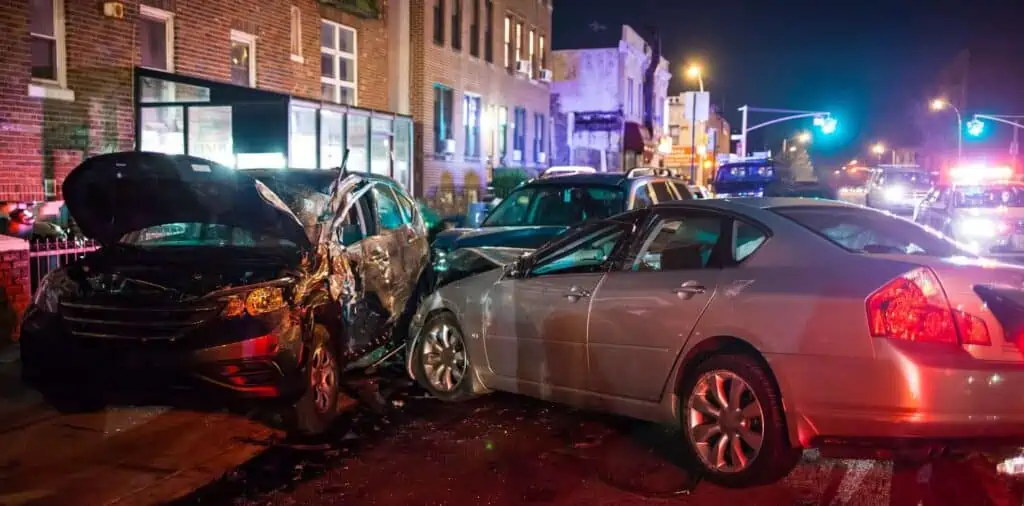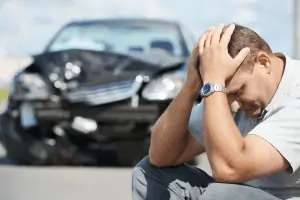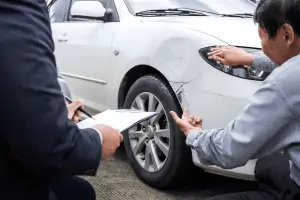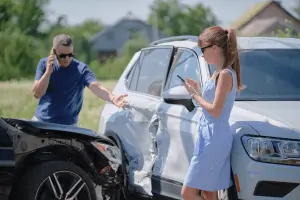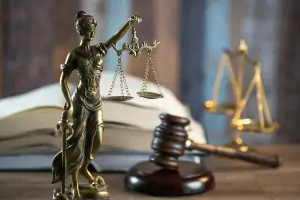Have you been involved in rear-end collisions? Did your car sustain vehicle damage, or you’ve been involved in a truck accident and you have been severely injured? Did you know that you can recover money for these damages? If you find yourself in this predicament, this guide is for you.
In most cases, car accident victims don’t know what to do after the incident. They act instinctively and try to talk or bargain with the negligent driver.
Yes, there are instances in which bargaining works. However, more often than not, negotiating with the liable driver by yourself can do you more harm than good.
This blog post shows you how to prove you are not at fault in a car accident and how significant personal injury lawyers are when dealing with this situation. Read further to learn more!
Table of Contents
ToggleHow Do Different States Determine Fault in a Car Collision?
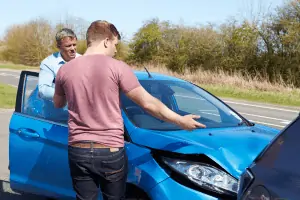
An at-fault state means that a victim can recover compensation from the defendant. In contrast, a no-fault state means the victim has to file a car accident claim with their own insurance company.
A state following a no-fault rule doesn’t necessarily restrict victims from filing an insurance claim or personal injury lawsuit against the defendant. However, they need to go through their own insurance provider before they can demand compensation from the defendant.
No-Fault States
All drivers must possess personal insurance protection (PIP) coverage in no-fault car accident cases. Following a ‘prove no-fault’ policy, each state has its own set of rules for recovering compensation.
There are twelve states in the U.S. following this policy. These states are Utah, Pennsylvania, North Dakota, New York, New Jersey, Minnesota, Michigan, Massachusetts, Kentucky, Kansas, Hawai’i, and Florida.
At-Fault States
Other than the mentioned states above, the remaining states of the U.S. follow an at-fault policy. Under an at-fault state, victims can recover money from the at-fault driver’s insurer through a personal injury lawsuit.
In at-fault states, obtaining personal injury protection coverage may not be necessary. You must confirm this with your state’s DMV or a local legal expert.
However, these states also follow a variation of the comparative negligence law. Suppose an insurance company denies the victim’s personal injury claim because of shared fault. In that case, the victim’s party would need to prove they don’t share fault in the accident.
What Do You Need to Prove to Get Compensation for Your Losses and Injuries?
When establishing a car accident claim, the first step is to prove that the defendant was indeed at fault. After meeting the burden of proof for establishing liability, you will be able to proceed with your personal injury case.
Accident victims can recover economic (medical bills, property damage, etc.) and non-economic (pain and suffering, loss of consortium) damages from the liable party.
There are three elements you need to establish in every personal injury case:
- Duty: The defendant had a duty of care to the plaintiff
- Breach: The defendant neglected that duty of care
- Causation: The breach caused the accident and resulted in serious injuries to the victim
To prove any element, you need evidence. A car accident lawyer will help determine what kind of evidence is required for your case and how you can obtain that evidence.
Some common types of evidence include witness testimony, photographs, police reports, etc. In severe cases where multiple victims or severe injuries are involved, like a bus accident, an expert testimony may be necessary to establish causation and the extent of damages.
Here Are 7 Ways to Prove You Were Not at Fault in a Car Accident
It’s crucial to establish your shared fault in personal injury cases. We outlined seven ways you can do to help prove that you’re not responsible or at fault in a car wreck accident.
Document the Accident Scene or Collect Evidence of the Crash
If you’re a survivor of a car accident, it’s essential to collect evidence as soon as possible. This evidence can help prove that the other driver was at fault and increase your chances of receiving compensation for your losses.
Document everything that happens after the accident. Take photos and footage of the accident scene and the damage to your car. If possible, you should also try to get medical records of your injuries.
If you’re able to, collect physical evidence from the scene. This could include skid marks, broken glass, or car pieces that the defendant damaged in the collision.
Exchange Contact Information With the Involved
If you are in an accident, it is essential to exchange contact information with the other driver and any other parties involved. The defendant’s insurance information will be necessary if you decide to file a claim against the other driver.
In addition, make sure to get the other driver’s insurance information. This detail will help speed up the process of getting your damages reimbursed.
Suppose they are uncooperative; you can obtain a copy of the official police record. Most police records include driver’s insurance information, and you can request a copy for yourself when filing for a personal injury claim.
Get Witness Statements
Witness statements can be crucial in accident injury cases. They can help prove the other driver’s negligence and support your claim in court. If you can find witnesses who saw the accident happen, make sure to get their contact information.
You don’t have to demand a statement from them right away. The court or your lawyer may or may not request a fair witness statement about the accident. In this case, you will only need to have a way to communicate with them if the court or your lawyer requests their presence.
Obtain a Copy of the Police Report
If you are victimized in a car accident, it is vital to have a copy of the police report. A police report is a piece of viable evidence that can help support your personal injury claim. The responding police officer is tasked to document the specifications of the accident.
The police’s accident report usually outlines the traffic violations (i.e., beating the red light, ignoring stop signs, overspeeding, etc.) and what type of car accident happened (rear-end collision, left-turn accident, etc.).
To obtain a copy of the police report, you will need to file a public records request with the police department. The requested document should be available within a few weeks.
Check Your Local Traffic Laws
Traffic laws vary per state. This difference in traffic regulations is evident in drunk driving cases. For example, in Utah, the allowable blood alcohol concentration (BAC) limit is .05%, lower than the national standard BAC of .08%.
The same could be applied to different aspects of the state’s traffic law. You must speak with a personal injury attorney to gain insight and clarification on applicable local statutes for your case.
No Doubt Liabilities
Certain liabilities are not up for debate when it comes to car accidents. For example, if you drive and cause an accident, you are automatically at fault. This is called a no-doubt liability accident.
Other liabilities can be more complicated. In some cases, the victim and the defendant may be partially at fault for the accident. Identifying liability in these situations can be tricky, and it’s often best to consult with an attorney who specializes in car accident cases.
In essence, determining liability is solely based on facts and evidence recovered in the accident. Because of this, conducting a thorough inspection of the case is critical.
Do Not Admit Fault
Many people commit the mistake of admitting fault by issuing an apology after encountering a car collision. This can be detrimental to an accident injury case.
It’s important to remember that facts and evidence determine liability. Even the genuine action of apologizing for the accident can and will be used against you.
If you encountered a car accident, it’s best to stay silent until you have consulted with a personal injury lawyer. This will ensure that you protect your rights and get the fair compensation you deserve.
What Should I Do if I Am Accused to be Partly Liable for the Car Crash?
Different states abide by different comparative negligence laws. As a victim, knowing and understanding your local statute about the shared fault.
Generally, your party must recover compelling evidence and establish a solid case to prove fault and hold the other driver liable for the accident. There are four variations of the comparative negligence law throughout the country, and they are:
- Pure comparative: Victims will recover compensation for the accident, but their shared fault will reduce it in a pure comparative negligence state. States following this law are California, New York, and Florida.
- Modified comparative: Victims with more than 50% shared fault cannot recover compensation in a modified comparative negligence state. States following this law are Texas, Utah, and Arkansas.
- Contributory negligence: According to this law, victims cannot recover damages even if they are less than 50% at fault for the accident. States following this law are Alabama, Virginia, and North Carolina.
- Slight-gross negligence comparative: South Dakota is the only state following this law. Victims can only recover damages in a slight-gross negligence state if they are ‘slightly’ at fault and the other party exhibited ‘gross’ negligence.
Working With a Car Accident Lawyer Can Help You With Your Car Crash Case
Working with car accident lawyers can help you better understand your rights as a victim in a car crash. They will be able to help you gather the evidence you need to prove fault in the accident and get the compensation you deserve.
When choosing a personal injury lawyer to work with, it’s essential to make sure they have the experience and knowledge in handling auto accidents. They should also be able to help you understand the nuances of your local comparative negligence law.
Knowing how fault is determined in your car accident case can help you protect yourself from making any admission of fault. It can also ensure that you recover fair compensation for the damages sustained.
Don’t hesitate to speak with a personal injury attorney if you need help proving fault against the at-fault driver. Most local attorneys offer a free legal consultation so take advantage of this free consultation to find your perfect lawyer.
Contact an Experienced Car Accident Attorney Near You
If you want to pursue legal action against a negligent driver in New York, contact our attorney at Giordano Law Offices Personal Injury & Employment Lawyers now for a free case review.
With a culmination of more than three decades of experience, our lawyers successfully won countless cases, established a solid attorney-client relationship with many clients, and garnered multiple recognitions from various award-giving bodies in the industry.
Schedule a free consultation with our lawyer today by calling (646) 736-4504 or send your case details in our online contact form. Read more car accidents blog posts here.
Related Posts
- How To Handle A Car Accident In New York
Have you ever been involved in a car accident in New York? If that's the…
- How Much Money Do You Get From A Car Accident Settlement?
A lot of injured accident victims have a lot of questions aimed at the sole…
- 5 Steps To Take After An Auto Accident
If you or someone you know has been injured in an auto accident in NYC,…


